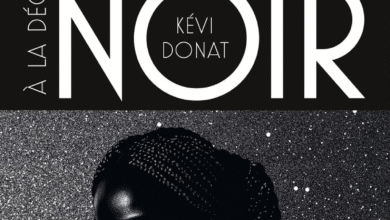Design For Peace: Transhumance collection for the integration and autonomy of Tuareg refugees
Transhumance is the name of a collection of fashion accessories and handicraft decorative items made by 17 Tuareg refugees in Burkina Faso. They have combined their expertise to that of students from top French schools as part of the project “Design for Peace”, dedicated to the independence and socio-economic integration of refugees. A program initiated by UNHCR (High United Nations High Commissioner) and the Afrika Tiss association. The collection, will be exhibited until 23 July, at the gallery “Made in Town”, in Paris, and simultaneously, from 3 June to 10 July in Ouagadougou.
“Design for Peace” is a program dedicated to the training and coaching of Malian refugee artisans in order to develop their production and marketing. The first collection is called « transhumance » in tribute to the nomadic Tuareg people who deserted Burkina Faso to escape the conflicts taking place in their country. The project led by Afrika Tiss Association created in 2011 in collaboration with the High United Nations High Commissioner for refugees (UNHCR) yearns to allow long-term socio-economic integration of Tuareg refugees artisans from Mali who immigrated to northern Burkina Faso. « At the time, we were already working with women weavers who took refuge in Ouagadougou, Burkina Faso. We had created a weaving center in the summer of 2013. In addition, and in order to develop this new collection, we wanted to improve their skills through training. Informed of our activities, UNHCR has visited us with a project around the craft to improve the autonomy of Malian refugees arrived in the north of the country in 2012, « revealed Mariette Chapel, president and founder of Africa Tiss and initiator of the project. Few refugees intend to return home. Therefore, rather than considering them in a state of emergency, UNHCR wishes to treat them as registered in a sustainable project, allowing them to win in the long run their lives. A project that allows these populations to enroll in the economy of their host country. The challenge is considerable but not unachievable, since Malian Tuaregs are good at shaping basketry and metal, a rich and diverse craft, but still at the same time traditional.
Develop know-how
This first collection, produced with six students from leading Parisian applied art schools such as ENSCI,Boulle Workshops, Duperré , among others, will be presented in France and Burkina Faso. Until the 23 July 2016, a collection will be exhibited at the gallery “Made in Town”, in Paris and another one from June 3 to July 10 at the French Institute in Ouagadougou. « We wanted to innovate and offer items that are outside the mainstream. Rather than creating loincloth products, a too common material, we challenged the refugees to produce pieces meeting the market’s expectations by combining their skills with different design styles. The result is outstanding, since we now have a couple of leather, wood, metal and plant fibers pieces from this collection. Baskets, lamps, cushions, mirrors … all this items are previously unseen.
« This project aims to closely and lastingly link creativity and solidarity, in order to make of handicrafts a mean of economic development for vulnerable populations. So as to ensure the success of this project, it is fundamental to innovate. Indeed, the Tuareg craft is well known internationally « adds Mariette Chapel.
An alliance that makes a difference
« We proposed to the UNHCR to start residency opportunities to allow refugee artisans and Parisian designers to work together on the development of a capsule collection with innovative objects. This is the first stage of the project that started between March and April and lasted for seven weeks. This project helped to explore new creative paths and try to transpose techniques and skills mastered by refugee artisans on other types of items « says Mariette Chapel.
Design for Peace, with her Transhumance collection, allows discovering a rich panel in materials, colors and especially in combination of materials. « The Tuaregs who used to work on combinations of leather and wood, for instance, have been asked to create pieces from leather and calabash. Leather has been wrapped then around the calabash. They also managed to cross the leather with rubber recycled from woven tubes and matted together, so as to obtain a finished never achieved so far, « mentions Mariette Chapel.
A first phase of a project successfully accomplished, willing on a long-term perspective, to allow 200 families to earn a living from their creative activities.
By Darine Habchi







